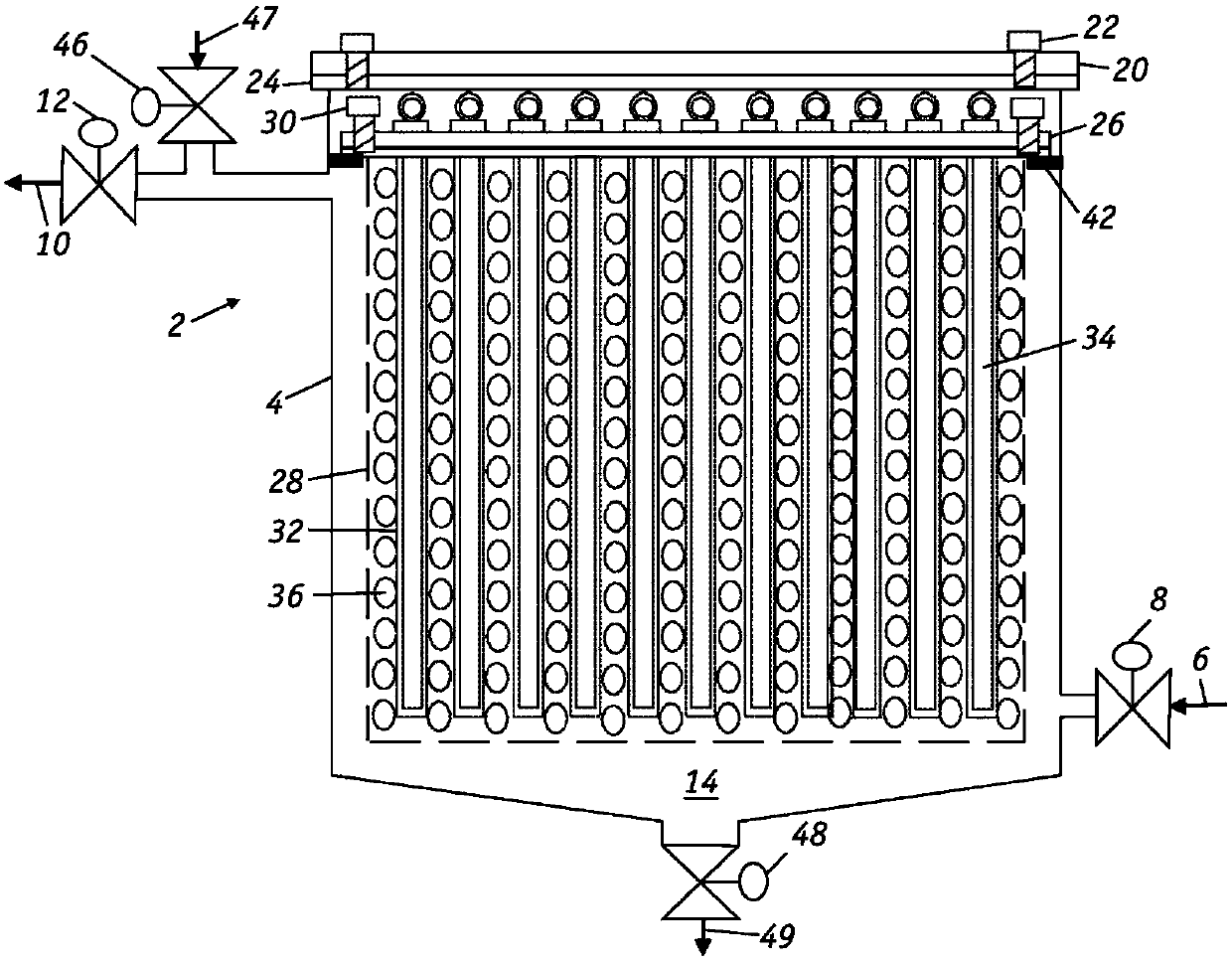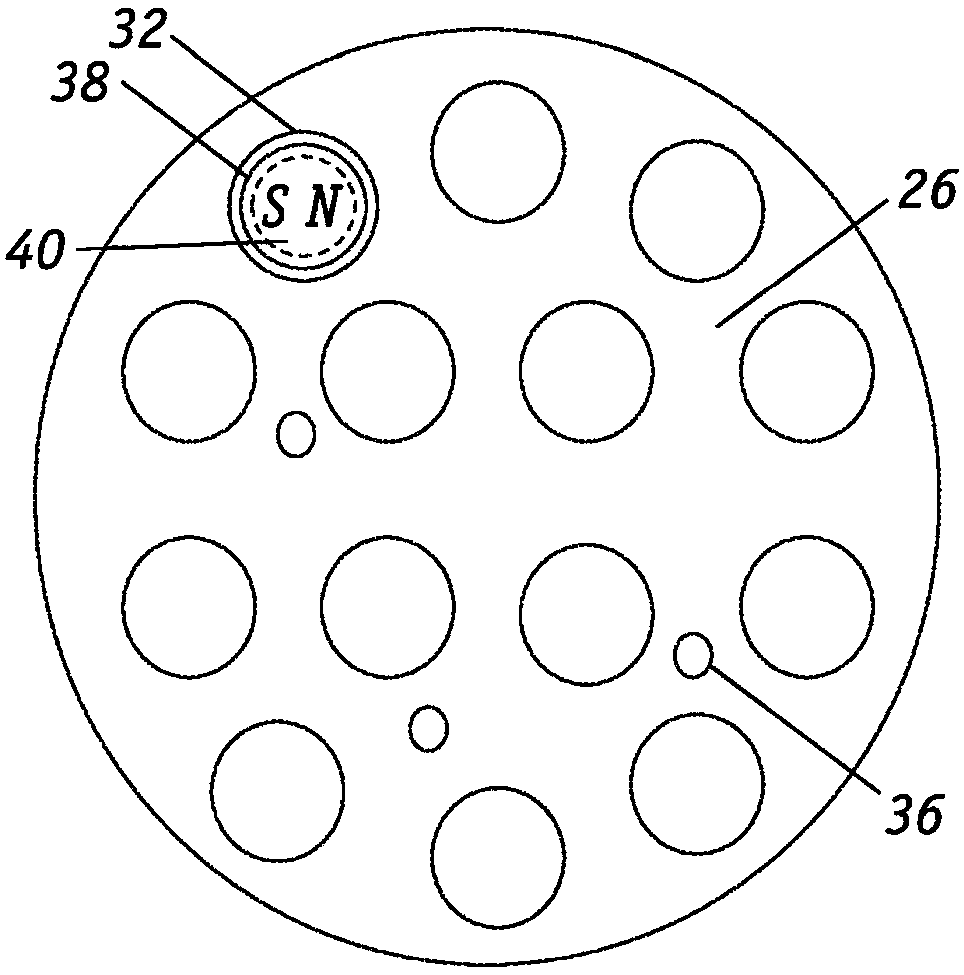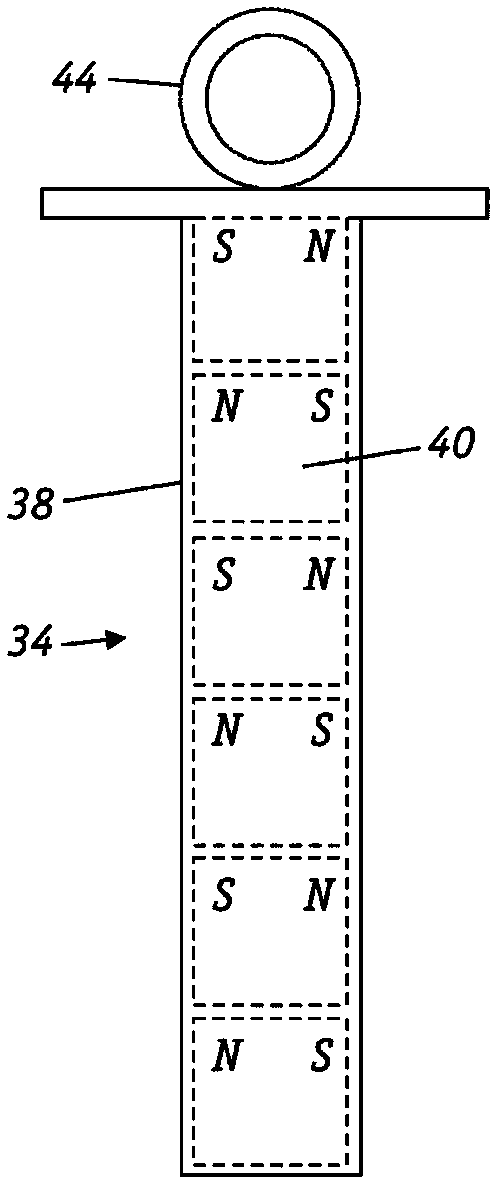Filters for paramagnetic and diamagnetic substances
A magnetic filter and diamagnetic technology, applied in filtration separation, dispersed particle filtration, high gradient magnetic separator, etc., can solve the problem that nanoparticles cannot be effectively filtered, diamagnetic materials cannot be removed, and the efficiency of small particles is poor, etc. question
- Summary
- Abstract
- Description
- Claims
- Application Information
AI Technical Summary
Problems solved by technology
Method used
Image
Examples
experiment example
[0049] The following experimental examples are presented to further illustrate different aspects and embodiments of the present invention, but should not be construed as limiting the scope of the present invention. To illustrate the interaction between paramagnetic and diamagnetic substances under the influence of an external magnetic field generated by a permanent magnet, paramagnetic and diamagnetic powders were selected for different experiments. According to the mass magnetic susceptibility (MS) of a substance, substances are classified into paramagnetic and diamagnetic.
[0050] Mass susceptibility (MS) refers to the magnetic susceptibility per gram of a substance, and magnetic susceptibility refers to the degree of magnetization of a material per unit applied field. Mass susceptibility describes the magnetic response of a substance to an applied magnetic field. All substances each have a characteristic value of their mass magnetic susceptibility (MS). Paramagnetic subs...
experiment example 1
[0057] The degree or strength of magnetism exhibited by selected solid substances with high MS values in a magnetic field was measured. A permanent magnet bar assembly with a magnetic field strength of 6000GS was used. The selected solid powders are: cobalt (Co), iron (Fe), nickel (Ni), nickel oxide (NiO), iron oxide (FeO and Fe 2 o 3 ), ferrous sulfate (FeSO 4 ), ferric chloride (FeCl 3 ), Ni supported on γ-alumina catalyst (Ni / γAl 2 o 3 )), dysprosium oxide (D y2 o 3 ), gadolinium trioxide (Gd 2 o 3 ), and chromium trioxide (Cr 2 o 3 ).
[0058] For each test, a precision balance (capable of weighing down to 10 -4 grams) Weigh approximately 0.5 grams of powder and place the powder in a (accurately weighed) glass container. The permanent magnet bar assembly is then placed near the powder. After aspirating the powder, remove the magnetic bar and weigh the container with residual powder (if any). Calculate the weight percent (%) of powder attracted by the bar m...
experiment example 2
[0064] This experiment verifies that the diamagnetic material itself will not be attracted by the magnetic rod. The diamagnetic materials tested are silicon, silicon carbide (SiC), γ-alumina (γAl 2 o 3 ), non-magnetic butadiene, titanium oxide (TiO 2 ), ceramics, activated carbon, polyethylene, and elemental sulfur. Magnetic butadiene was also tested. A permanent magnet rod assembly with a magnetic field strength of 6000GS was placed next to the powder sample; except for magnetic butadiene (including paramagnetic substances), no powder was attracted to the magnetic rod. The presence of a magnetic field does not induce a magnetic field in the diamagnetic material.
PUM
| Property | Measurement | Unit |
|---|---|---|
| size | aaaaa | aaaaa |
| size | aaaaa | aaaaa |
| magnetic force | aaaaa | aaaaa |
Abstract
Description
Claims
Application Information
 Login to View More
Login to View More - R&D
- Intellectual Property
- Life Sciences
- Materials
- Tech Scout
- Unparalleled Data Quality
- Higher Quality Content
- 60% Fewer Hallucinations
Browse by: Latest US Patents, China's latest patents, Technical Efficacy Thesaurus, Application Domain, Technology Topic, Popular Technical Reports.
© 2025 PatSnap. All rights reserved.Legal|Privacy policy|Modern Slavery Act Transparency Statement|Sitemap|About US| Contact US: help@patsnap.com



